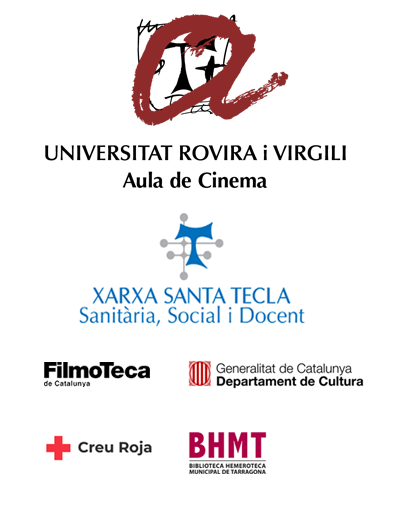The Heroisms Exhibition
Heroism. History of a nitrate. The most excepcional recovery of Tarragona cinema.
The Heroisms exhibition displays restored footage, period documents (photochromes, advertising posters, etc.) and a short film to commemorate the recovery and context of the film Heroismos, shot in Tarragona in 1922.
Heroismos is a feature-length film directed by Lluís Bonet and produced by the Red Cross, which was made to help raise money for the Hospital de Sang in Tarragona to treat soldiers wounded in the Rif War. The film, which lasted about 100 minutes, featured images of emblematic parts of the city such as the cathedral, the city walls and the Mediterranean Balcony, and was originally accompanied by a booklet with the storyline.
The film was gradually forgotten until eventually, as is the case with many other early 20th century films, the footage vanished altogether.
However, in 2012, the first fragments of nitrate film, an old cinematographic material not usually found outside film libraries or collections, were discovered. Four years later, the process of restoring the film began through a collaboration between the Filmoteca de Catalunya and the URV. This work led to the discovery of a further three reels in the possession of Josep Banús in the village of La Masó.
The film is currently deposited and safely preserved at the Filmoteca. The Cinema Group is delighted to have helped revive audiovisual material of such great historical and social value portraying the beginning of the 20th century and local practices in Tarragona, so that it can once again become part of our heritage.
Practical information about the exhibition
-
Location: Hospital de Santa Tecla (entrance through the doors leading to the Emergency Department)
Opening times:
-
Monday to Friday, from 5 to 8 p.m.
-
Saturday and Sunday, from 11 a.m. to 1 p.m. and from 5 to 8 p.m.
-
The exhibition will be on display until Sunday 11 June.
#heroismostgn
Related activities
- Talk: "To Africa, boys! The Rif War and the Disaster of Annual" (in Catalan) on the Rif War, by Jaume Camps (URV)
- Tuesday 6 June, from 7 to 8 p.m.
The Spanish protectorate over northern Morocco was established in 1912. Spain was given control of the Rif region, which had traditionally been hostile to the central power. The first resistance groups arose as soon as the occupation began, causing serious problems for Spanish troops and ultimately culminating in defeat at the Battle of Annual in 1921, in which some 8,000 Spaniards lost their lives.
This talk will explain what these campaigns were like, what caused the Spanish army's disastrous defeat, and how they finally managed to dominate the territory using chemical weapons.
Jaume Camps Girona holds a PhD in history and is a lecturer in the URV's Department of History and History of Art.
- Talk: "Hospital care in Tarragona. Medical practices as seen through the film Heroísmos" (in Catalan) by Josep Barceló (URV)
- Thursday 8 June, from 7 to 8 p.m.
The discovery and restoration of the film Heroísmos shows certain healthcare settings and medical practices that can no longer be reconstructed using oral sources. It is important to remember that the film was made to raise money to set up a hospital in Tarragona to treat the wounded from the Rif War (1911-1927).
Therefore, some scenes in the film show us what medical and hospital practices were like during the first third of the 20th century. What's more, the film also examines how Tarragona society (and by extension, Catalan society) understood health and illness in the 1920s. In short, this talk aims to address a series of historical questions related to the history of medicine by looking at the film Heroísmos.
Josep Barceló Prats holds a PhD in Anthropology and is a medical historian and lecturer in the URV's Department of Nursing.
Exhibition credits
- Organisation: The URV Cinema Group and Xarxa Santa Tecla
- In collaboration with: Filmoteca de Catalunya, Red Cross, Tarragona Town Council
- Curators: Maria Roig and Joana Zapata
- Production: Vanina Hofman (URV Cinema Group) and Joan Adserà Quesada (Xarxa Santa Tecla)
- Audiovisual: S. Morris Produccions
- Graphics: Sergi Martín
- Cultural mediators on site: Andrea Verge Martín and Pau Díaz Navarro (URV)
- Virtual visit: Pere Manel Martin Serrano




 Instagram
Instagram Vimeo
Vimeo Ivoox
Ivoox